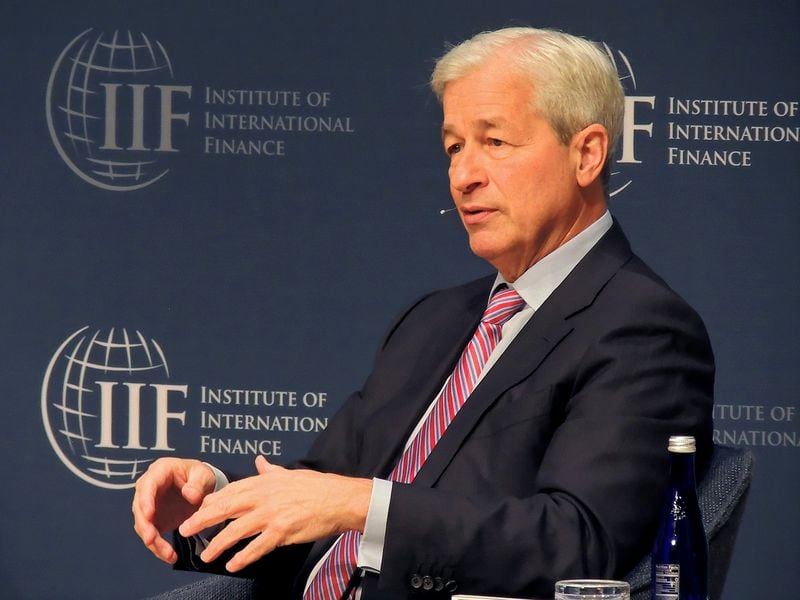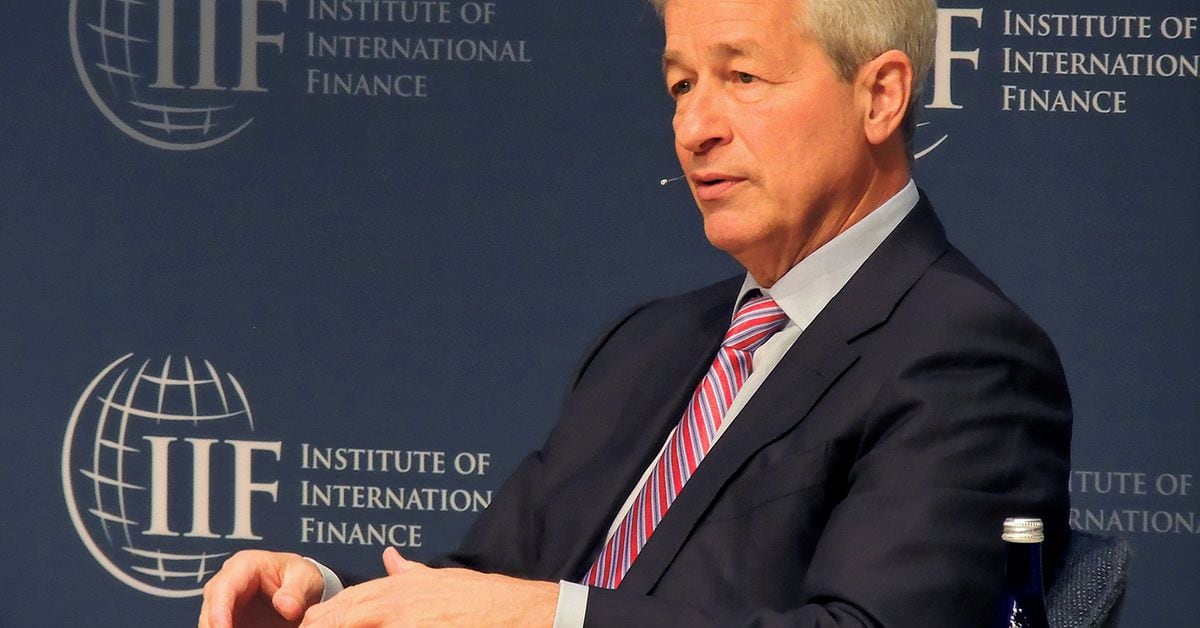[ad_1]

Business Resource Groups. To deepen our culture of inclusion in the workplace, we have 10 Business Resource Groups (BRG) across the company to connect more than 160,000 participating employees around common interests, as well as to foster networking and camaraderie. Groups welcome anyone — allies and those with shared affinities alike. For example, some of our largest BRGs are Access Ability (employees with disabilities and caregivers), Adelante (Hispanic and Latino employees), BOLD (Black employees), NextGen (early career professionals), PRIDE (LGBTQ+ employees) and Women on the Move.
Women on the Move. At JPMorgan Chase, they sure are! Women represent 28% of our firm’s senior leadership globally. In fact, our major lines of business — CCB, AWM and CIB, which would be among Fortune 1000 companies on their own — are all run by women (one with a co-head who is male). More than 10 years ago, a handful of senior women at the company, on their own, started this global, firmwide, internally focused organization called Women on the Move. It was so successful that we expanded the initiative beyond the company; it now empowers clients and consumers, as well as women employees and their allies, to build their careers, grow their businesses and improve their financial health. The Women on the Move BRG has more than 70,000 employees globally.
Advancing Black Pathways. This comprehensive program, which just reached the five-year mark, focuses on strengthening the economic foundation of Black communities because we know that opportunity is not always created equally. The program does so by, among other accomplishments, helping to diversify our talent pipeline, providing opportunities for Black individuals to enter the workforce and gain valuable experience, and investing in the financial success of Black Americans through a focus on financial health, homeownership and entrepreneurship. An important part of the program’s work is achieved through our investment in Historically Black Colleges and Universities (HBCU). We now partner with 18 schools across the United States to boost recruitment connections, expand career pathways for Black students and other students, and support their long-term development and financial health. As a measure of the program’s success, in four years we have made nearly 400 hires into summer and full-time analyst and associate roles at the firm.
Military and Veterans Affairs. This firmwide effort sponsors recruitment, mentorship and development programs to support the military members and veterans working at JPMorgan Chase. Back in 2011, we joined with 10 other companies to launch the Veteran Jobs Mission (VJM), whose membership has since grown to more than 300 companies representing various industries across the United States and has hired over 900,000 veterans and military spouses. In 2023, VJM announced the creation of its Advisory Board, which is composed of 14 corporate leaders, to provide strategic direction and oversight of VJM as it continues to expand its commitment to support economic opportunities for veterans and military spouses, including its goal to hire 2 million veterans and 200,000 military spouses by 2030. JPMorgan Chase alone has hired in excess of 18,000 veterans since 2011 and currently employs more than 3,100 military spouses.
Creating opportunity for people with disabilities. The firm’s Office of Disability Inclusion continues to lead strategy and initiatives aimed at advancing economic opportunity for people with disabilities. In 2023, we joined lawmakers and business leaders in Washington, D.C., to show support for passage of the Supplemental Security Income (SSI) Savings Penalty Elimination Act. Modernizing the SSI program, by updating asset limits for the first time in nearly 40 years, would allow millions of people with disabilities who receive SSI benefits the opportunity to build their savings without putting their essential benefits at risk. We also provided business coaching to more than 370 entrepreneurs with disabilities.
Virtual call centers. When we sought to expand our customer service specialists program across the United States, we turned to Detroit, launching our first virtual call center in 2022. Investments in Detroit’s workforce development infrastructure helped us hire 90 virtual customer service specialists for a program that has outperformed many of our traditional call centers around the world. Following this success, we expanded our hiring efforts and this virtual program to Baltimore to create new jobs that jump-start careers. And now we’re evaluating the possibility of expanding even further.
Entrepreneurs of Color Fund. A critical challenge we have seen in so many communities is that traditional lending standards render too many entrepreneurs — particularly entrepreneurs of color and those serving these communities — ineligible for credit. In response, we helped launch the Entrepreneurs of Color Fund (EOCF) in Detroit, a lending program designed to help aspiring small business owners gain access to critical resources needed for growth that are often not equitably available — capital, technical assistance and mentorship, among others. These challenges aren’t unique to Detroit so we worked with community development financial institutions to replicate the EOCF program in 10 markets across the United States in 2023, deploying more than 2,900 loans and $176 million in capital to underserved entrepreneurs across the country.
Senior business consultants. To help entrepreneurs and small businesses make the transition from community lending to accessing capital from traditional financial institutions, we created a new job — senior business consultant — to provide support. Senior business consultants in branches that focus on underserved communities offer coaching and help business owners with everything from navigating access to credit to managing cash flow to generating effective marketing. Since 2020, these consultants have mentored more than 5,500 business owners, helping them improve their operations, grow revenue and network with others in the local business community.
AdvancingCities The organizing principles that define the business and community investments we make and how we best achieve an overall impact in local economies were heavily influenced by our experience in Detroit. Seeing Detroit’s comeback begin to take shape several years ago, we created AdvancingCities to replicate this model for large-scale investments to other cities around the world. From San Francisco to Paris to Greater Washington, D.C., we’ve applied what we learned in Detroit to communities where conditions are opportune for success and require deeper investments — where community, civic and business leaders have come together to solve problems and get results.
JPMorgan Chase Service Corps. Ten years ago, we launched the JPMorgan Chase Service Corps to strengthen the capacity-building of nonprofit partners. We brought employees from around the world to Detroit to assist with its recovery — from creating a scoring model for a nonprofit to helping prioritize neighborhoods for development funding to devising an implementation plan for an integrated talent management system. Since that time, the Service Corps has expanded, with more than 1,500 JPMorgan Chase employees contributing 100,000 hours to support over 300 nonprofits globally.
Community Centers/Branches and Community Managers. A local bank branch, especially in a low-income neighborhood, can be successful only when it fits the community’s needs. That is why over the last several years we have shifted our approach to how we offer access to financial health education, as well as low-cost products and services to help build wealth. Since 2019, we have opened 16 Community Center branches, often in areas with larger Black, Hispanic or Latino populations, and have plans to open three more by the end of 2024. These branches have more space to host grassroots community events, small business mentoring sessions and financial health seminars, which have been well-attended — to date, over 400,000 people have taken advantage of the financial education seminars. In each of these Community Center branches, we hired a Community Manager (who acts as a local ambassador) to build relationships with community leaders, nonprofits and small businesses. The Community Manager concept and practice have become so successful that we have also placed these managers in many of our traditional branches in underserved communities. We now have 149 Community Managers throughout our branch network.
Work skills development. Detroit showed us how talent in communities is often overlooked. We saw this in the early days of our investment when we visited our partners at Focus: HOPE, a training program designed to help Detroiters develop skills for high-demand jobs. Quickly, it became clear that the training and education system in Detroit was disconnected from employers and their talent needs. By investing in programs like Focus: HOPE, we have been able to help bridge local skills gaps by training people for in-demand jobs in communities like Dallas, Miami and Washington, D.C. Between 2019 and 2023, we supported more than 2 million people through our extensive learning and career programming around the world.
Increasing our rural investment. We are proud to be the only bank with branches in all 48 contiguous states, which include many rural communities. Nearly 17 million consumers living in rural areas hold over $100 billion in deposits with us and $175 billion in loans. We are also a leading wholesale lender in these communities, helping to fuel local economies through relationships with local companies, governments, hospitals and universities. Since 2019, we have made material progress in extending our footprint to reach more rural Americans, including expanding our branch network into 13 new states with large rural populations. Now we are raising the bar. With our new strategy, we have a goal to have a branch available to serve 50% of a state’s population within an acceptable driving distance, including in heavily rural states such as Alabama and Iowa. This focus is part of our recently announced plan to build an additional 500 branches and hire 3,500 employees over the next three years. Through this expansion, we will partner across lines of business and our Corporate Responsibility organization to help advance inclusive economic growth and bring the full force of the firm to America’s heartland.
[ad_2]
Source link

